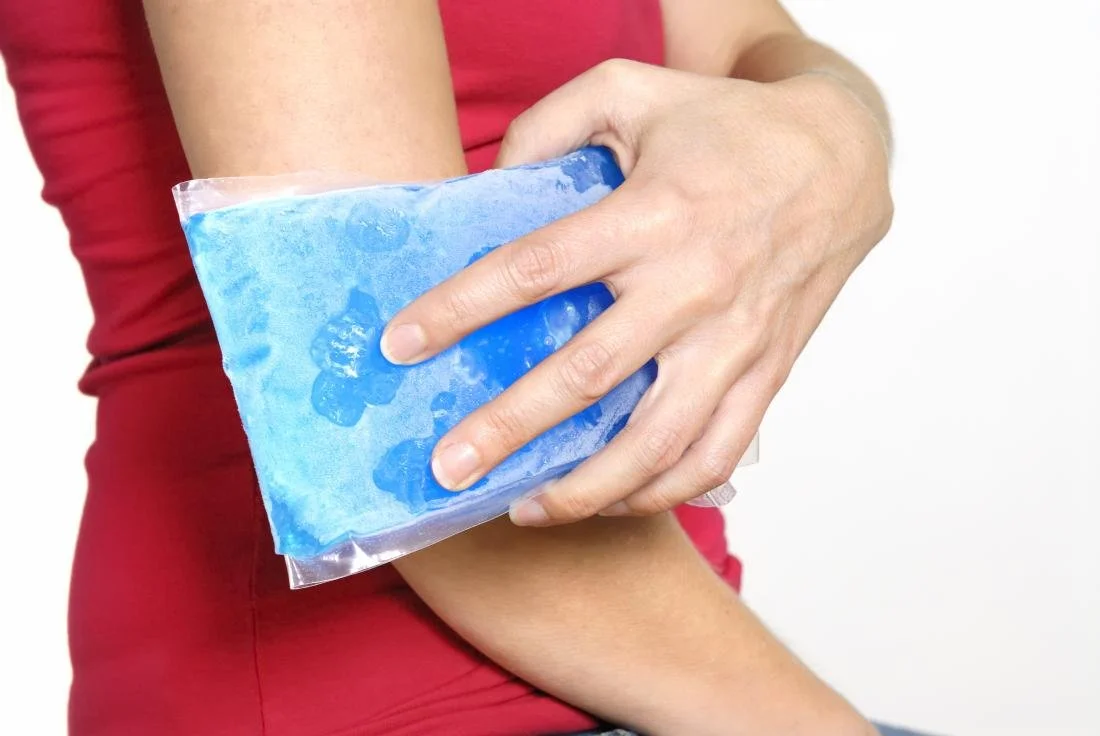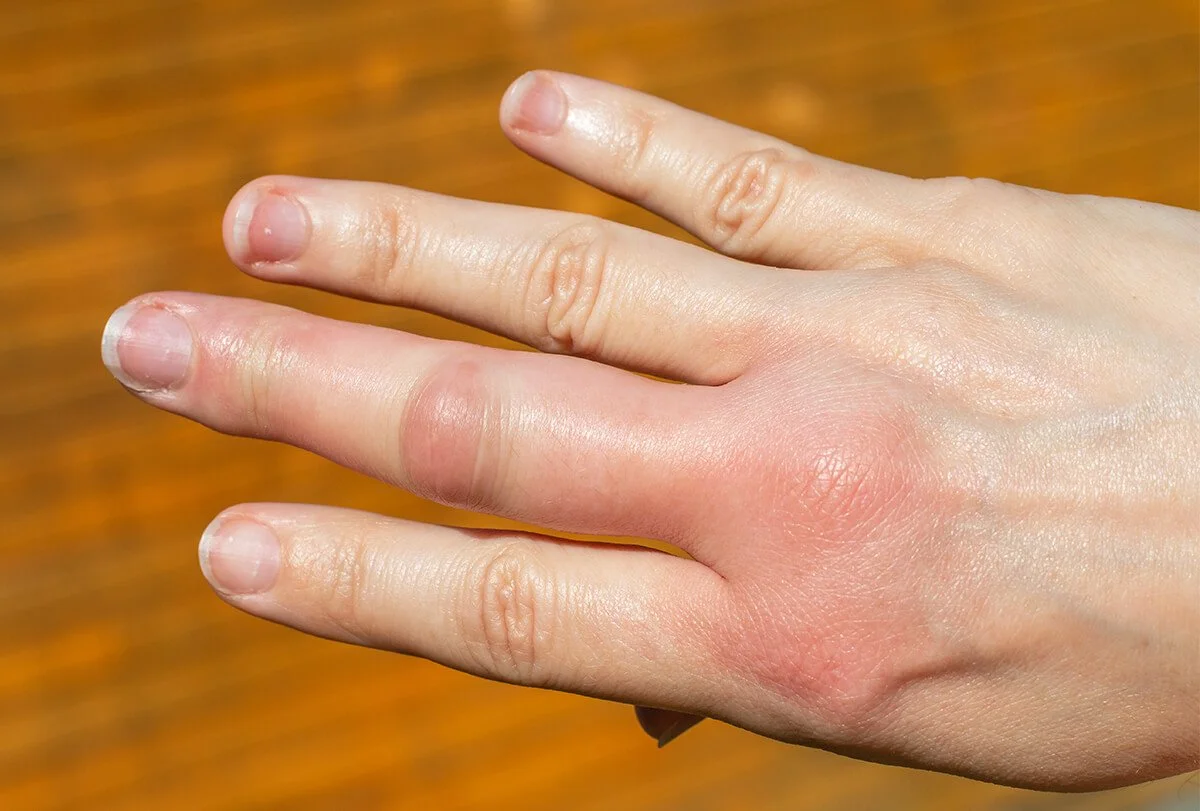Natural Wasp Sting Home Remedy: Quick and Effective Solutions
Discover > Texas Mom Blog > Natural Wasp Sting Home Remedy: Quick and Effective Solutions
Wasp stings can be a painful and sometimes frightening experience, particularly for those who are allergic. While there are many over-the-counter medications available to help alleviate symptoms, exploring natural home remedies can provide an effective and inexpensive alternative. Natural treatments often come with fewer side effects, making them a popular choice for those seeking relief.
When faced with the discomfort of a wasp or bee sting, it's essential to know how to alleviate the pain and swelling effectively. This guide explores natural home remedies to treat wasp stings and bee stings, offering quick solutions to provide relief from the discomfort caused by these stinging insects. Whether you're dealing with a single sting or multiple bee stings, understanding these remedies can help ease the discomfort and speed up the healing process.
Discovering effective home remedies for insect stings, including wasp and bee sting treatment, can provide relief from the discomfort caused by these painful encounters with stinging insects. Exploring natural and accessible wasp sting home remedies is a practical approach to alleviating the irritation and discomfort associated with an insect sting.
Many of these remedies emphasize common household items and can be easily applied to soothe the affected area. It is always essential to be cautious and monitor the person stung for any signs of severe allergic reactions, in which case emergency medical assistance should be sought. However, for those with mild to moderate reactions, natural home remedies may prove to be highly beneficial.
What Is A Wasp Sting
A wasp sting is a painful experience caused by the injection of venom from a wasp's stinger into the skin of its victim. The venom contains proteins and other substances that can cause swelling, redness, and pain at the site of the sting.
Wasp stings are a common issue, especially during the warmer months when wasps become more active. Unlike bees, which typically die after stinging, wasps can sting multiple times. This makes them a more significant threat if an individual encounters a wasp nest or if the wasp feels threatened.
While most wasp stings are not dangerous to humans, some people can experience allergic reactions to the venom. In rare cases, a severe allergic reaction called anaphylaxis can occur, which can be life-threatening and requires immediate medical attention. Symptoms of anaphylaxis include difficulty breathing, rapid heartbeat, severe swelling, and shock.
If an individual is not allergic, the symptoms of a wasp sting generally subside within a few hours to a couple of days. To alleviate the pain and inflammation, various home remedies can be used for treatment.
These remedies typically include ingredients that are readily available and easy to use, such as cold compresses, baking soda (how long does baking soda last?), vinegar, or over-the-counter pain relief medications. However, always consult a healthcare professional for advice on treating a sting, especially if symptoms worsen or if there is a known allergy to wasp venom.
Understanding Body Reaction to Wasp Stings
When a person is stung by a wasp, the body reacts to the venom injected into the skin. The severity of the reaction can vary from person to person, depending on individual sensitivities and the number of stings received. In general, the body's reaction to a wasp sting can be classified into two categories: local reactions and systemic reactions.
Local Reactions:
These are the most common types of reactions to wasp stings. They are confined to the area around the sting site and usually manifest as pain, redness, and swelling. The discomfort sometimes extends beyond the immediate vicinity of the sting but remains limited to the surrounding tissues. Local reactions typically resolve within a few hours to a couple of days.
Systemic Reactions:
In some cases, a wasp sting can trigger a more severe, body-wide response. This can happen when the venom spreads from the sting site, affecting various organs and systems within the body. Symptoms may include hives, difficulty breathing, rapid heartbeat, dizziness, and nausea. Systemic reactions can be a sign of a serious allergic reaction called anaphylaxis, which requires immediate medical attention.
It is important to note that the body's reaction to wasp stings can differ not only among individuals but also from one sting to another for the same person. Factors such as the specific species of wasp, the location of the sting, and the individual's physical condition at the time may all contribute to the nature and severity of the reaction.
To manage the pain and discomfort caused by a wasp sting, various home remedies can be utilized. These remedies may help minimize inflammation, alleviate pain, and reduce the risk of infection.
However, in cases of systemic reactions or when symptoms are severe or persistent, the affected person should seek medical assistance immediately.
Immediate Response To Wasp Stings
Removing the Sting
When a person is stung by a wasp, it is essential to act quickly and remove the sting immediately. This will help reduce the amount of venom released into the skin, as wasps can continue injecting venom even after the sting has been detached. To remove the sting, it is advised to use a flat-edged object, such as a credit card, to gently scrape away the sting in the opposite direction of its entry. Avoid using tweezers or pinching the affected area, as this may force more venom into the skin.
Cleaning the Sting Area
Once the sting has been removed, the next step is to clean the wound thoroughly to prevent infection. Wash the area with soap and water, being sure to cover both the puncture wound and the surrounding skin. After cleansing the sting site, apply an antiseptic cream to further protect against infection. Finally, to soothe the pain and reduce inflammation, consider applying a cold compress for approximately 15 to 20 minutes. This can also help slow the spread of venom and provide relief to the stung individual.
Remember, the focus should be on taking prompt action after a wasp sting to minimize the negative effects and possible complications. By removing the sting and cleaning the area accordingly, the risk of infection can be significantly reduced and the person may recover sooner.
Natural Wasp Sting Remedies
There are several natural remedies available to help soothe pain and reduce inflammation from a wasp sting. Here are four popular and effective options:
Ice Packs
Ice packs can help numb the area, reduce pain, and alleviate swelling from a wasp sting. To use this remedy, wrap an ice pack or a bag of frozen peas in a thin cloth, and gently place it on the affected area for 10-15 minutes. It is essential to protect the skin from direct exposure to the cold using a cloth or towel. Repeat this process several times a day as needed.
Baking Soda
Making a paste with baking soda and water is another effective way to treat a wasp sting. The alkaline nature of baking soda can neutralize the acidity of the venom, reducing pain and swelling. To use this method, mix enough water with baking soda to create a thick paste, and apply it to the sting. Leave the paste for at least 15 minutes before rinsing it off with cold water. This remedy can be repeated several times a day.
Apple Cider Vinegar
Apple cider vinegar (how long does apple cider vinegar last?) is known for its anti-inflammatory properties and may help soothe wasp sting symptoms. To use this remedy, simply soak a cotton ball or small piece of cloth in apple cider vinegar and apply it to the affected area for about 15-20 minutes. This process can be repeated several times a day to relieve pain and reduce inflammation.
Aloe Vera
Aloe vera has natural healing properties that can help soothe and moisturize the skin, reducing pain and swelling from a wasp sting. To utilize this natural remedy, take a fresh aloe vera leaf and cut it open to extract the gel. Apply the gel directly to the affected area and allow it to dry. This can be done several times a day to help relieve discomfort and promote healing. Store-bought aloe vera gel can also be used if a fresh leaf is unavailable.
Preventing Wasp Stings
Taking precautions to avoid wasp stings can help reduce the need for home remedies. One of the most effective ways to prevent wasp stings is to avoid attracting wasps in the first place. Keep food and drinks covered when outdoors, as the scents can attract wasps. The same applies to garbage bins; ensure they are sealed tightly to prevent any tempting odors from escaping.
Wearing light-colored clothing can also make a difference, as wasps tend to be attracted to dark, bright colors. Avoid wearing floral patterns, which may resemble their natural food sources such as flowers. When outdoors, try to wear long sleeves, pants, and closed-toe shoes to minimize the exposed skin that could be stung.
In addition, it is essential to remain calm if a wasp is nearby. Swatting or making sudden movements near a wasp may provoke it and lead to a sting. Instead, slowly and calmly move away from the area and give the wasp space.
Maintaining your property is another crucial step in preventing wasp encounters. Regularly check for wasp nests around your home, particularly in areas such as eaves, sheds, and tree branches. If you find a nest, it is best to contact a professional pest control specialist to ensure safe removal.
By taking these measures, the chances of needing natural home remedies for wasp stings can be significantly reduced.
When To Seek Medical Help
Although most wasp stings can be treated at home with natural remedies, it is essential to know when to seek medical help. In some cases, a wasp sting may lead to severe allergic reactions or complications that require urgent medical attention.
A person should seek medical help if they experience anaphylaxis. Anaphylaxis is a severe and potentially life-threatening allergic reaction. Signs of anaphylaxis include:
Difficulty breathing: Wheezing, shortness of breath, or rapid breathing.
Swollen face, lips, or tongue: This swelling can obstruct the airways and make it difficult to breathe.
Rapid or weak pulse: A feeble or racing heartbeat might indicate anaphylactic shock.
Hives or rash: An itchy, red, or blotchy skin rash that quickly spreads over a wide area of the body.
Nausea, vomiting, or diarrhea: These symptoms could signal a severe allergic reaction.
Another reason to seek medical help is if the wasp sting shows signs of infection like redness, warmth, and increased pain in the affected area. Pus formation and swelling may also indicate an infection. It is important to consult a healthcare professional if these signs appear to ensure proper treatment and avoid complications.
Lastly, if a person has been stung multiple times or if the sting is in a sensitive area such as the mouth, throat, or eye, it is necessary to visit a doctor. Multiple stings may lead to a higher concentration of venom in the body, causing more severe reactions. In addition, stings in sensitive areas may result in complications or injuries that require medical intervention.
While natural home remedies are helpful for most wasp stings, it is crucial to recognize when to seek medical help. Monitoring the symptoms after using home remedies will help ensure the person's safety and well-being.







